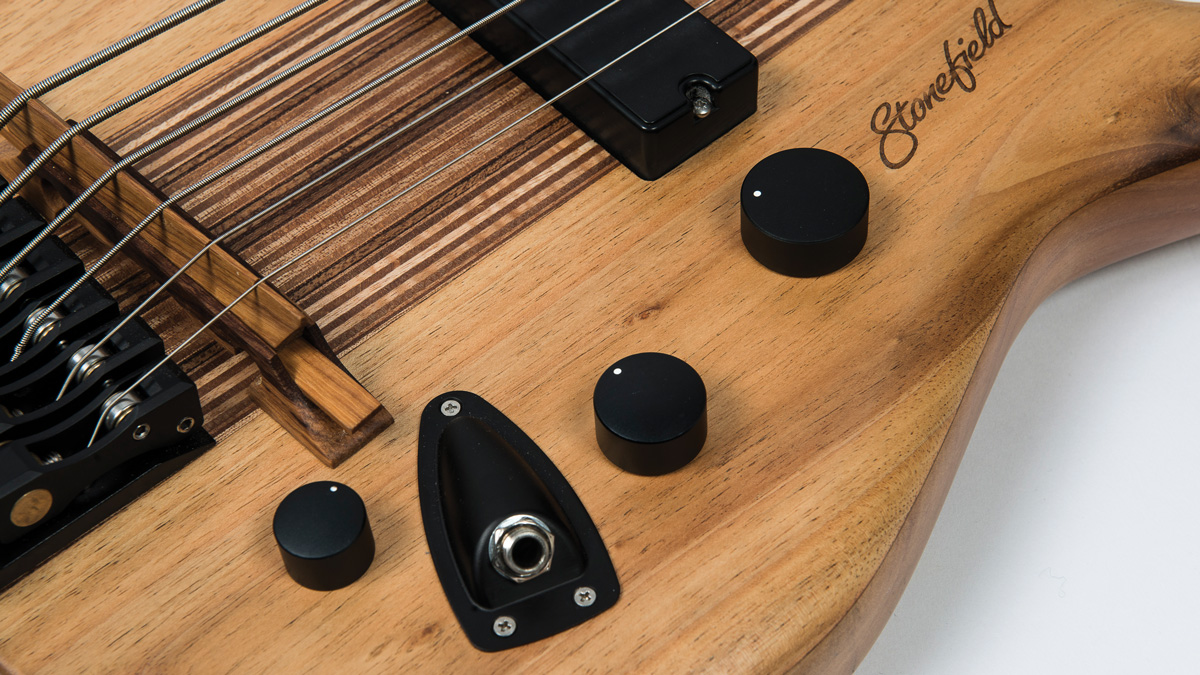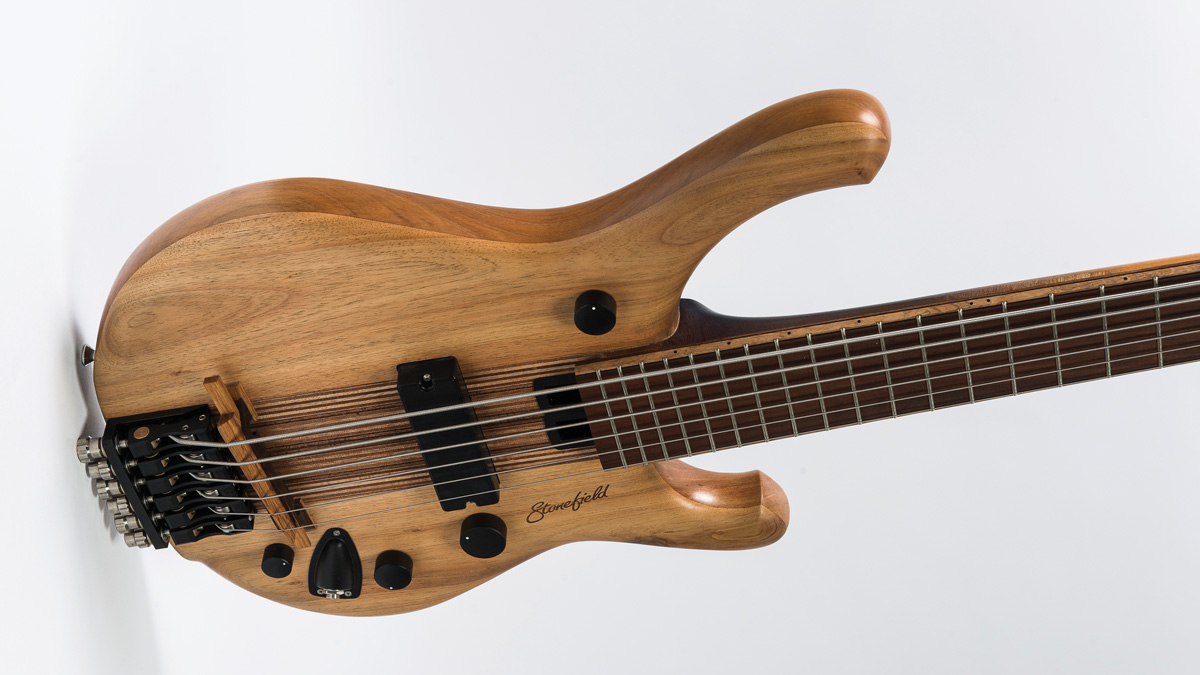MusicRadar Verdict
If six-string basses are your thing, this might just have the tones you’ve been looking for.
Pros
- +
A break from the norm and an interesting six-string in many respects.
Cons
- -
Very pricey.
MusicRadar's got your back
The Stonefield story continues apace, with this particular example at the top end of the New Zealand-based luthiers’ range; the M-Series Model 1-6S offers all of the refinements offered by Tomm Stanley and his team at Stonefield.
Six-strings by their very nature can be a little unwieldy, to say the least, so to combat their daunting dimensions and weight factors, Stanley has utilised titanium hardware and truss rods to reduce the impact which metal components have on the instrument’s weight. We’ve been impressed with the other Stonefield instruments we’ve seen, so how does this one fare?
Build
The M1-6S is only available as a Slimline model with titanium hardware that takes around 220 grammes off the overall weight. Stanley’s patented tuning system is an impressive unit and operates reassuringly well, with smoothness and solidity. The bass is equipped with two truss rods, both made from titanium so as not to burden the bass with more weight than is required.
The rounded bodyshape and deep cutaways offer good playability, although a little more contouring to the front and rear of the salusalu and Australian blackwood body might prove beneficial.

Finished in a smooth, non-sticky satin oil, the body’s natural hues shine through, an effect that is enhanced by the through-neck construction that runs the length of the instrument. Stanley has used timbers indigenous to the region, with black maire deployed for the bridge piece and nut and incorporated into the 44-piece laminated neck core. The warm-coloured fingerboard is constructed using massa, and the fingerboard binding utilises Solomon Island ebony and black maire once again.
The four-colour burst finished neck has a full D-shaped profile, making it a bit of a handful, although this is offset by the 16mm string spacing and broad fingerboard dimensions. Some players may find the 62mm nut width a bit of a challenge at first, but be assured that this is a comfortable bass to play, despite some headstock bias, and the level of finishing is very high indeed.
Sounds
We’ve commented before on the impressive passive tones offered by the Stonefield product range, and this bass is no different in that respect. Its inherent woody character is clearly noticeable; plugging the bass in reinforces those characteristics.
Want all the hottest music and gear news, reviews, deals, features and more, direct to your inbox? Sign up here.
Without an active EQ, you may wonder just how the increased note range may sound without the extra push that an active circuit can provide - but have no fear, the passive system developed by Stonefield is an interesting hybrid, designed to coax the maximum tone range from the instrument.
With controls for volume, bass roll-off, treble roll-off and the midrange setting selector, there are plenty of options available. Experimentation is the name of the game here, so working with the bass and treble controls is wise in order to get your starting point for a tone that works for you. From that point on, you have 10 midrange options open to you. The control itself has six positions - bypass followed by five tones - and to access the extra five midrange options you need to push or pull the low control.
The mids are really where the tonal differences are at on this bass. As a six-string, you want a tone that utilises the low range of the low B string and the higher frequencies of the C string; the musical situation you find yourself in will dictate the mid-setting you need to tap into. Some knowledge and understanding of the different settings is imperative, but pick players will have as much to enjoy here as fingerstyle players, slap players and tappers.
The bass market is less set in its ways than the guitar market, so it’s not surprising that Stonefield instruments have caught many an eye at the past two London Bass Guitar Shows, garnering some favourable comments in the process. The fact that they are so different from most instruments is actually a plus for the brand. As a six-string, this model is an impressive instrument once you get past the initial familiarity period.
That said, a bass like this is not for the faint of heart. At a snip under £4500, it is a serious purchase - but for some players, it might be just what they’re looking for.
